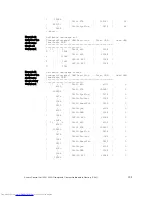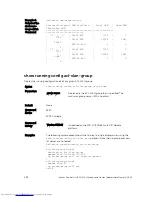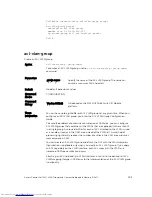
To remove this filter, you have two choices:
• Use the
no seq sequence-number
command syntax if you know the filter’s
sequence number
• Use the
no deny tcp {
source address mask
| any | host
ipv6-
address
} {
destination address
| any | host
ipv6-address
}
command
Parameters
source
Enter the IP address of the network or host from which the
packets are sent.
mask
Enter a network mask in /prefix format (/x) or A.B.C.D. The
mask, when specified in A.B.C.D format, may be either
contiguous or non-contiguous.
any
Enter the keyword
any
to specify that all routes are subject
to the filter.
host
ipv6–
address
Enter the keyword
host
then the IPv6 address to specify a
host IP address.
operator
(OPTIONAL) Enter one of the following logical operand:
• eq = equal to
• neq = not equal to
• gt = greater than
• lt = less than
• range = inclusive range of ports (you must specify two
ports for the
port
command)
port
Enter the application layer port number. Enter two port
numbers if using the range logical operand. The range is
from 0 to 65535.
The following list includes some common TCP port
numbers:
• 23 = Telnet
• 20 and 21= FTP
• 25 = SMTP
• 169 = SNMP
destination
Enter the IP address of the network or host to which the
packets are sent.
bit
(OPTIONAL) Enter the keyword
bit
to count the bits that
filter the processes.
count
(OPTIONAL) Enter the keyword
count
to count the packets
that filter the processes.
280
Access Control Lists (ACL)
















































